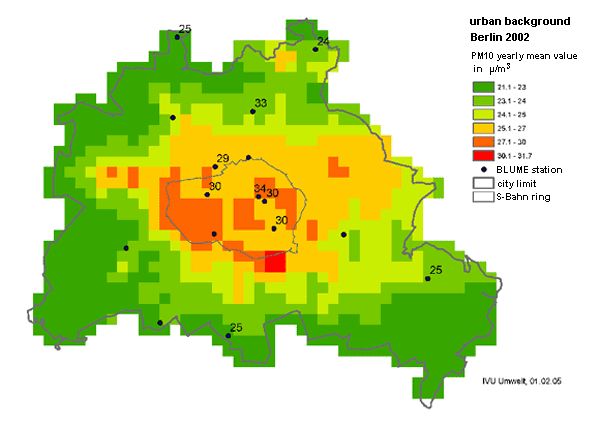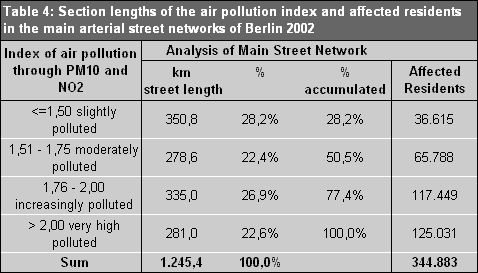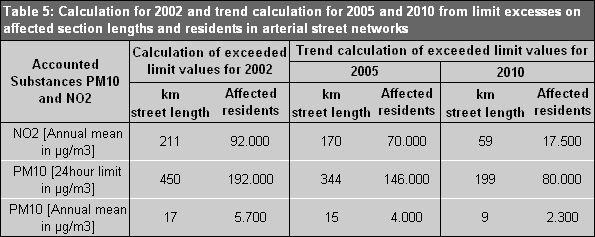The method applied to calculate the number of residents affected by limit excesses is taken from noise mapping (see also map 07.02 traffic noise (edition 2005)). The number of inhabitants whose residences front on the street is calculated. The number of citizens affected by limit excesses represents a rather conservative estimate, because pollutants spread everywhere and therefore increased concentrations can also be found outside of highly polluted street ravines.
Computed Trends for the Substances PM10 and Nitrogen Dioxide (NO2) for 2005 and 2010
In regard to long term compliance with air quality limits, the calculation of trend scenarios has significant value. They allow for the future development of large scale and local air pollution estimates and evaluation of whether the adopted measures must be strengthened in order to achieve a decline in air pollution. The emission readings for 2002, which form a basis for the calculation of air pollution indexes establish baselines. The resulting trend scenario takes into account both the 2005 and 2010 trend lines for e decreases in Europe and Germany, as well as in Berlin. They also show the progress achieved in the reduction of emissions from factories, power plants, and motor vehicles, as well as, for example, emissions of fine particulate matter from agricultural activity as a result of European regulations.
Due to the gradual replacement of older vehicles that have high pollution emissions, exhaust emissions (including nitrogen oxides and particles) from motor vehicle traffic will see a 30 % reduction by 2010. However, as traffic volume will increase, tire and brake friction, combined with the stirring up of street dust will increase the amount of fine particulate.
Compared to 2002 readings, 2010 total results for Berlin will see at least a 20 % reduction of NOx emissions and an approximate 6 % reduction of PM10.
It can be predicted that, even in 2010, the 24 hour limits for PM10 on about 200 kilometres of main street networks will be exceeded, affecting approximately 80,000 residents (see table 5)). Thus, additional measures in Berlin on national and European scales must be taken to further reduce both components.
The concentrations in main traffic streets will be reduced by 2010 by 22 % on average due to the measures resulting from trend scenarios which have been introduced to date. Hence the number of streets with limit excesses, and the number of impacted residents are clearly reduced. In addition, Berlin’s specific measures are needed to relieve the remaining 59 kilometres of streets where 17,700 people live.



